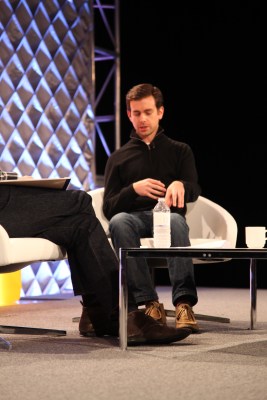Jack Dorsey’s mobile payments startup Square is now processing $11 million a day in mobile payments, it was revealed today at the Techonomy conference in Tucson, Arizona. Host David Kirkpatrick threw the number out there as something Dorsey had told him backstage—the last official number was $10 million a day and Square may not be consistently above $11 million yet. Either way, this is up from $4 million a day just last July.
The key to Square’s rapid growth in Dorsey’s mind is the same thing that propels Twitter: “We haven’t defined a lot of how people are going to use them.” He sees both as utilities which can be adopted to different purposes by their users, and that is what makes them so powerful. “We don’t want to make Square all about taxi cabs,”” he says. “And we don’t want to make Twitter all about celebrities and politicians.”
The other thing that Square and Twitter have in common is that they are both essentially communications technologies. Dorsey thinks of the receipt as a publishing medium (kind of like Twitter). “It is a communication medium between the business and the consumer,” he says. But normally it is something we throw away. That communication between merchant and payer is where the “exchange of value” lies. Payments is just something “we need to do” to create that communication.
Taking a swipe at NFC payments, he notes that they lack that communication layer. “NFC only gives the merchant the identity [of the consumer] after the transaction.” By identifying the customer when they walk in the door, as Square is trying to do with its new Card Case product, there is better chance to build loyalty by doing something for the customer before they even pay.
Asked about Twitter’s business model, Dorsey notes that Twitter’s ad products (Promoted Tweets, Promoted Accounts, and Promoted Trends) are getting engagement rates “between 1 and 5 percent.”
He doesn’t call these ads. “We wanted to build a business model that felt like it was part of the network,” he says. “I don’t think of it as advertisement in the traditional sense.” Rather, he wants to “introduce you to something new.” Of course, if those Promoted Tweets were really as delightful as he makes them out to be, they would be clicked more than 5 percent of the time.
